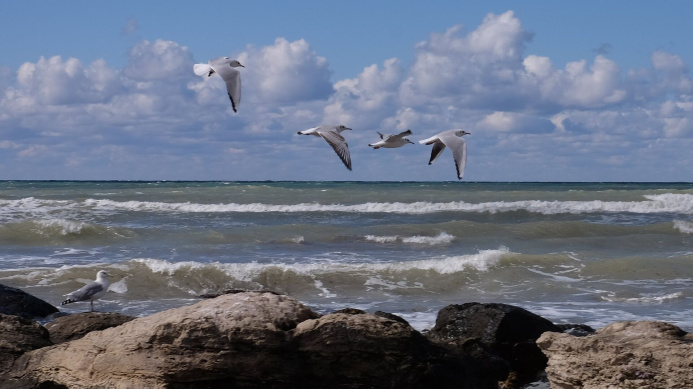Expert from Turkmenistan discusses Caspian Sea's condition and conservation measures
10.06.2025 | 11:30 |Ahead of the Third United Nations Conference on Landlocked Developing Countries (LLDC3), set to take place in the Avaza National Tourist Zone, significant attention is being paid to the environmental issues concerning the Caspian Sea. Sapargeldy Durdyev, Head of the Department for Advanced Training of Education Workers at the National Institute of Education of Turkmenistan, Doctor of Biological Sciences, and Associate Professor, provided insights to the "Neutral Turkmenistan" newspaper regarding the current state of the world's largest enclosed body of water, environmental risks, and measures undertaken by Turkmenistan.
According to the scholar, the Caspian Sea has increasingly become a subject of close scrutiny by environmentalists in recent years. "According to assessments by the United Nations Environment Programme (UNEP), the sea level has decreased by almost 2 meters over the past 25 years, and this trend continues," Durdyev noted. Various forecasts suggest that the water level could fall by an additional 18 meters by the end of the century.
Such changes are already significantly impacting the regional ecosystem: shallowing leads to a decline in fisheries, salinization of coastal soils, reduction of habitats for rare species, and threats to food security.
The Caspian Sea is the world's largest inland body of water, possessing exceptionally rich biodiversity. It is home to over 400 endemic species, including rare representatives such as the critically endangered Caspian seal and six sturgeon species: beluga, sterlet, Russian and Persian sturgeon, stellate sturgeon, and ship sturgeon. Durdyev stated that approximately 85% of the global sturgeon catch originates from the Caspian Sea.
Unique salmon species, such as the Caspian salmon and whitefish, are also found in the Caspian, their populations maintained through artificial reproduction. "The Turkmen coast plays a vital role in preserving biodiversity: hundreds of thousands of migratory birds—ducks, coots, geese, cormorants, swans, and flamingos—winter annually in the Hazar Nature Reserve," the scholar emphasized.
Turkmenistan places particular emphasis on the environmental sustainability of the Caspian region. The country implements an environmental protection strategy that includes the construction of industrial and tourist facilities compliant with international environmental standards. These include the Turkmenbashi International Seaport, the "Garabogazkarbamid" plant, and the polymer complex in Kiyanly village.
Furthermore, extensive greening efforts are underway in the coastal zone, involving the establishment of parks and the creation of artificial forests and a favorable microclimate. "Such policies help preserve the region's natural wealth and create conditions for sustainable development," Durdyev remarked.
The protection of the marine environment is regulated by the Framework Convention for the Protection of the Marine Environment of the Caspian Sea (Tehran Convention), to which Turkmenistan is a party. The country also supports the "Caspian Environmental Initiative," aimed at strengthening international cooperation in ecosystem protection.
"Our country advocates for a comprehensive approach to Caspian agenda issues—ranging from ecology to navigation and emergency situations," the expert underscored.
Additionally, since 2019, the Institute of the Caspian Sea has been operating in Turkmenistan, conducting scientific research and ecosystem monitoring.
ORIENT











